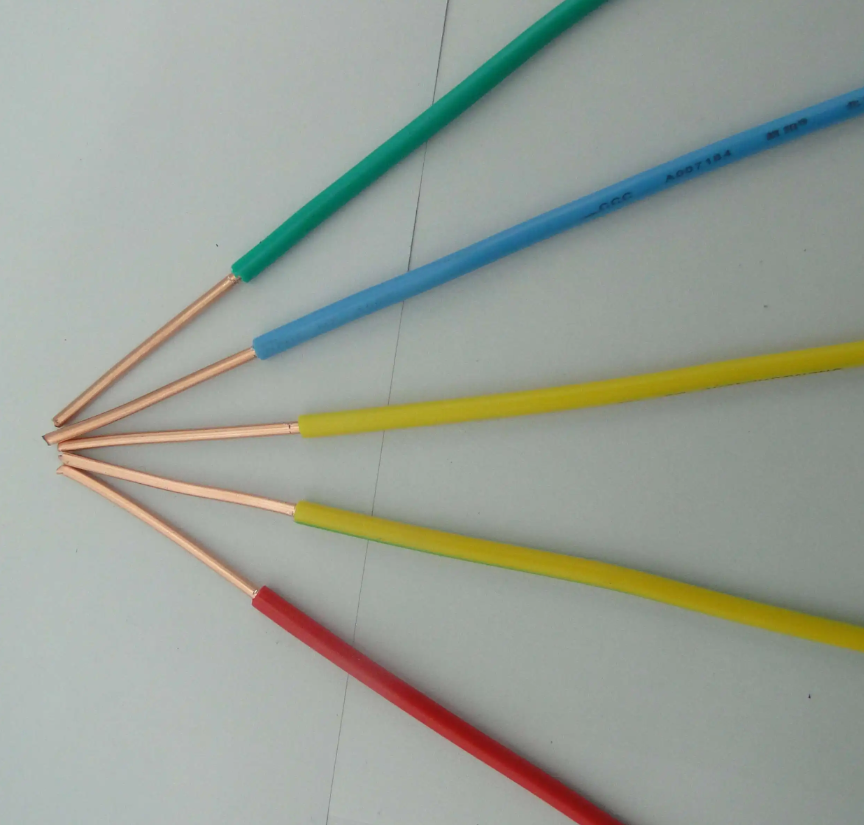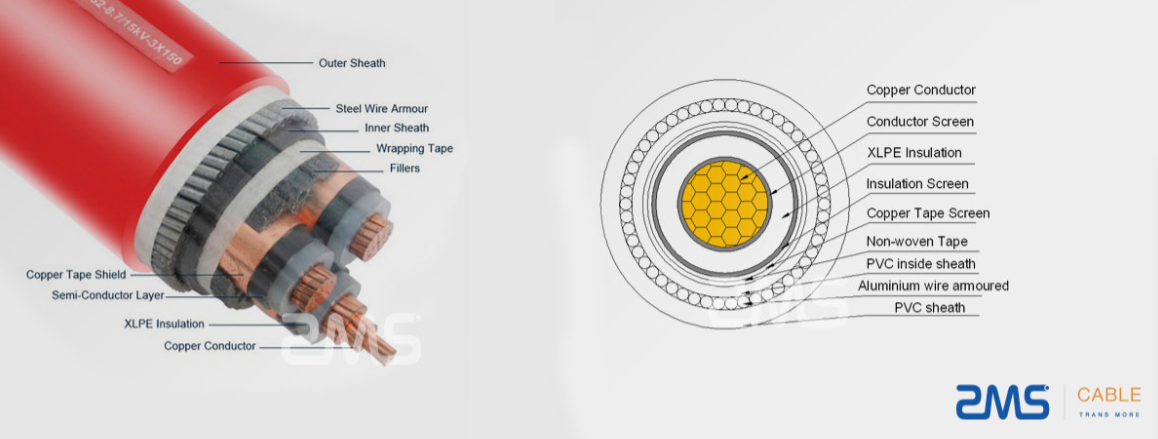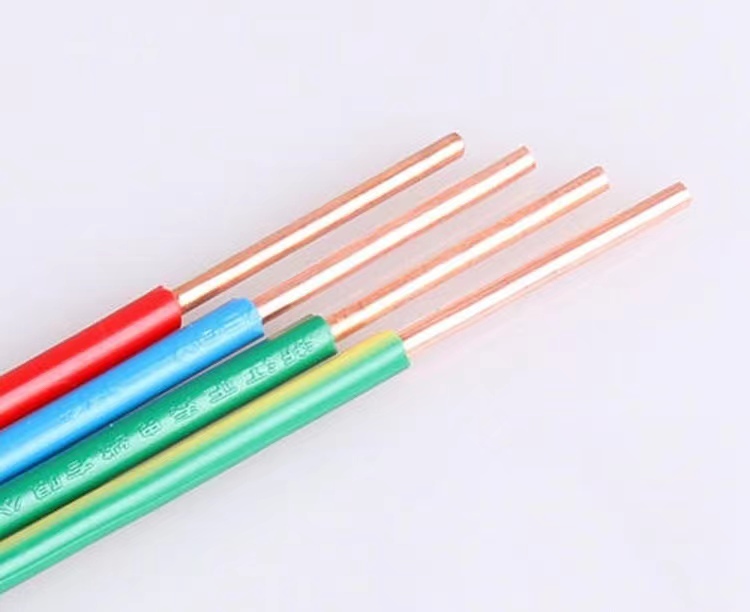Definition of single - core cable and multi - core cable

What is a single-core cable
Single - core cable leads to only one conductor in an insulating tube. The universal scope of application is home lighting fixtures, power cord plugs, central air conditioning, etc., all use single-core cable.
What is multi-core cable

Multi - core cable refers to a cable with more than one insulated core. Cable plays a major role in electronic products and electronic systems. It is the key link connecting various functions of microelectronic products, and is widely used in aerospace and maritime warships.
Advantages and disadvantages of single-core cable and multi-core cable
Advantages of single-core cable
Because the cross-sectional area ratio is small, not easy to get oxidized, short circuit current impact resistance, relatively long service life.
Disadvantages of single-core cable
The wire is difficult, and it is inconvenient to pull the wire in some places. After bending, it is difficult to straighten the wire.
Advantages of multi-core cable
Multi-core cable refers to the cable with more than one insulated core, so that the skin effect of the cable is reduced, so as to reduce the loss of the line.
Disadvantages of multi - core cable
Poor tensile resistance, easy to mold broken, poor surge current resistance, not convenient shaping.
The difference between single-core cable and multi-core cable
1. The two ends of the single-core cable are directly grounded, and the metal shielding layer of the cable may also generate the current that can reach the cable, and waste electric energy to form losses. When the current is not particularly large, it is better to use the single-core cable. Such as using household cables.
Single-core cable has a certain strength, more convenient threading, connection is also more convenient. Therefore, depending on the use of the environment, you can also choose a single-core cable.
2. A multi-core cable is a cable with multiple mutually insulated conductors in the outer insulation layer.
Multi-core wires are generally three-core wires, because during cable operation, the sum of the current flowing through the three cores is zero, and there is basically no induced voltage at both ends of the cable metal shield.
When the current is large, the required cable is relatively thick. Then it is more suitable to use multi-core cable.
With single-core cables, because of the skin effect, the current flows only at their surface, and much of the center is wasted. Moreover, the internal current is relatively small, and the use of cables is not sufficient, leading to the reduction of the utilization rate.
However, multi-core cable can effectively reduce the influence of skin effect. Considering the utilization rate, multi-core cable is more suitable.
3. The difference between single-strand copper wire and multi-strand copper wire is mainly in its structure. Because the multi-strand copper wire is soft and not easy to break the core, it is suitable for the curve tension movement of the wire in the tube installation, and the single-strand is not easy to pull (unless it is a straight line).
The same specifications of plastic insulated wire price, multiple wire is larger than a single wire, one is a complex process, and another requires pure copper. Single-strand copper wire is more expedient in line joints and equipment wiring than multi-strand copper wire.
4. Multi-strand copper wire generally needs to be crimped or welded wire nose, especially household wire diameter within 4 square BVR multi-strand copper core wire, according to GB50303.
Code for acceptance of construction quality of electrical engineering; According to Article 18.2, a multi-strand copper core wire connector with a cross-sectional area of about 2.5mm2 should be tightened to the tin lining or connecting terminal and connected to the terminal of the equipment and appliance.
5. The single-core cable is durable and conductive. Single-core wire is suitable for use in fixing places. For example, single-core wire is usually hard and easy to break after repeated bending. It is not difficult to configure.
6. Multi-core is flexible and easy to lay. Chandelier and so on, will move the place had better utilize multi-core with multi-core, cheap price, small cross-sectional area perforation tube easy. Single-core is commonly used in engineering. In addition, multi - core double - layer insulating skin is less.
7. The main difference between single - core and multi - core is the flexibility of the wire.
In essence, there is no good problem between the two, but the environment is different. For example, if you want to use the pipe wiring in the family room, it is obviously advantageous to use the single-core, because the single-core has a certain strength, convenient threading and simple connection.
But for the line to have more than one turn, a section of the line bending many time, obviously the use of multi-core is good, because the flexibility of the multi-core is good, can be better bending without breaking.
However, there is a problem of inadequate contact and heating of the joint of the multi-core wire, so the joint should be handled well when used. Generally try to use multi - core cable, because the loss is trifling.
If the current is very heavy, it is better to use double multi-core cables than single-core cables. If you must use single-core cables, pay attention to the three-core cables in three-leaf shape when laying single-core cables.
8. The same section of the single-core to bear the current is larger, multi-core soft, such as the power line of electrical equipment are multi-core, single-core cable is generally used in the usual production activities of power tools: home formally used - through the wall tube with BV plastic copper wire, TV, vacuum cleaner, inside the line is single-core.
Single core stability, easy to operate, electrical equipment generally uses multi - core cable or wire.
Decorate wire with single core or multi - core is good?

Single-core wire with the outer skin peeled off is a big, thick copper core inside, so it's harder, so we can call it BV hard wire.
Inside the multi-core wire is a lot of strands screwed together, also called BVR flexible wire, home is 220V ac, multi-core wire load capacity, electrical performance is better, impedance is smaller.
First, workers across the country are more used to using hard wire.
In addition, the hard wire is more stable, has a small surface area, is not easy to oxidize, and has strong tensile resistance.
It's not easy to get hurt during construction. During construction, single-core wire is more convenient because it has only one copper core, which is easy to connect. Unlike a cord, it's possible to attach only one half.
Last but not least, in the case of the same specification, single - core wire is cheaper.
Of course, the choice of single-core cable or multi-core cable should be analyzed depending on the specific situation. Trying to select the best cable that meets the environment.